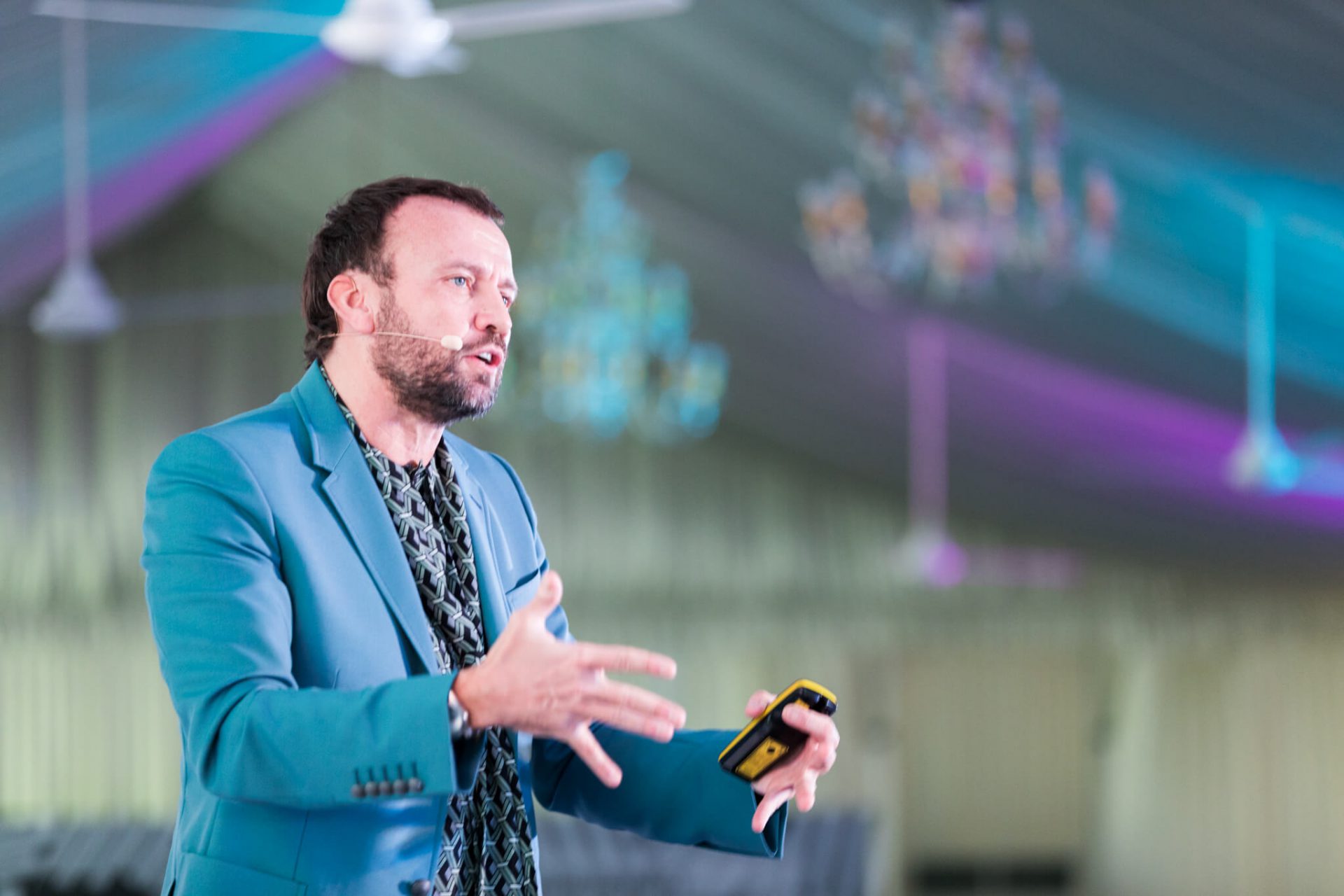Embracing the power of design: a conversation with Rea Stark
With a new Zurich-based design studio on the horizon, Stark’s mission is to redefine design’s role from a mere aesthetic addition to a strategic and profit-driving force for big corporations

Armed with a design degree from the GBS School of Design in St. Gallen, Switzerland, Rea Stark swiftly established himself as a prominent figure in the industry. With a passion for innovation, the Croatian designer honed his skills as an industrial designer, leaving his mark on prestigious brands like Sony, LG, Canon, and Nespresso, to name a few.
In 2016, he co-founded Piëch Automotive in Zurich alongside Anton Piëch, son of the esteemed former VolksWagen supervisory board chairman Ferdinand Piëch. This dynamic partnership set the stage for groundbreaking ventures in the automotive realm, captivating enthusiasts worldwide.
With a passion for transforming the corporate landscape, he recently founded his own studio Stark & Cie. aiming to provide board-level design guidance to major corporations. Recognizing the prevailing misconception that design is merely an embellishment for products, he seeks to redefine the narrative.
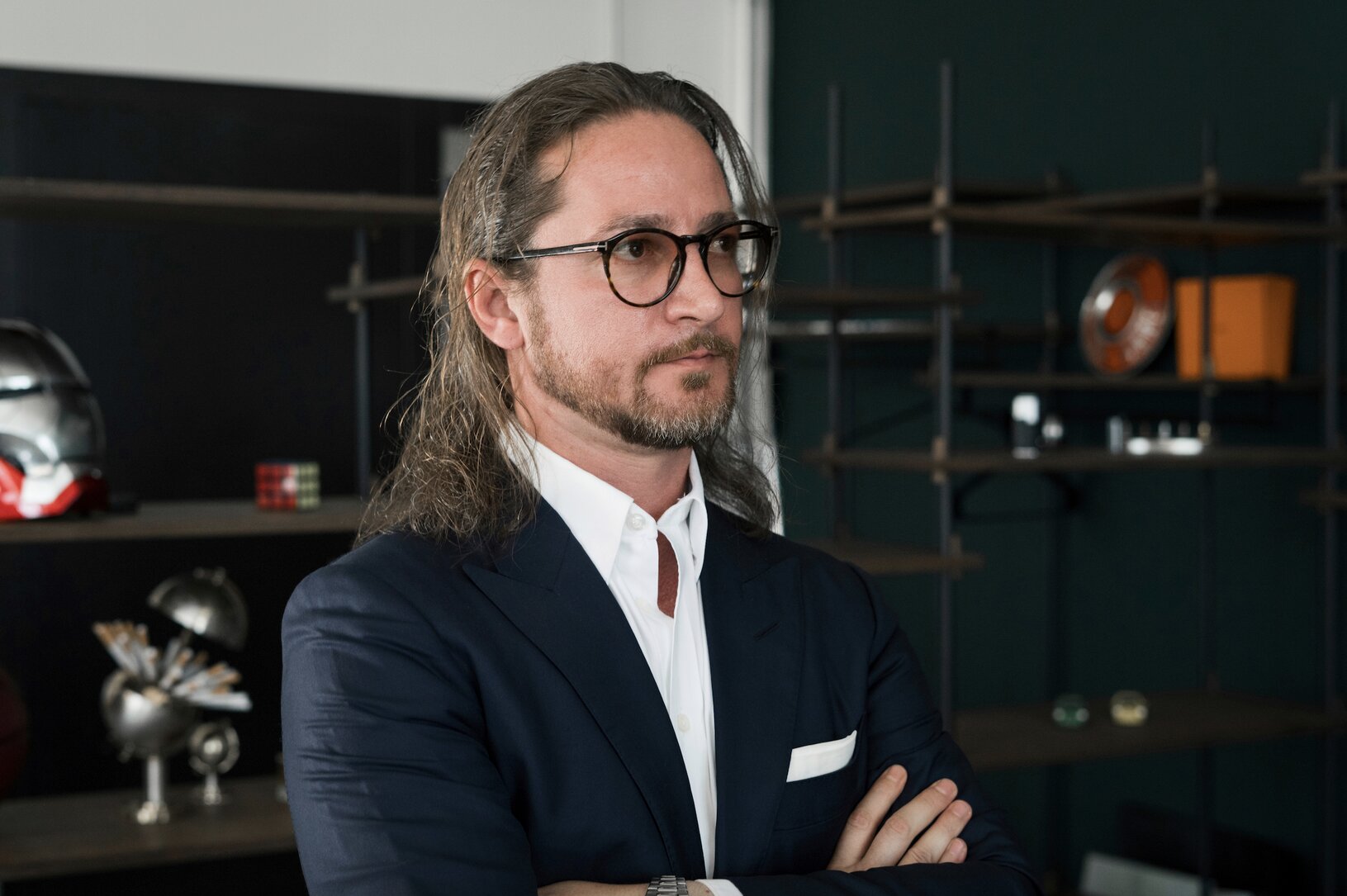
By infusing design into every facet of decision-making, he envisions a future where design becomes the driving force behind companies’ success. In today’s design-savvy and brand-conscious economy, his studio aims to revolutionize the boardroom perspective, elevating design from a cost center to a profit center.
We asked him some questions to better understand his story and his perspective on design. Enjoy!
Who is Rea Stark? How did your design journey begin?
Rea Stark:
“I was born in Switzerland and grew up in Croatia with my mother and sisters. We returned to Switzerland during the war and I completed my schooling there. My journey into design began attending an art school, unlike the typical story you might expect.
Drawing was always a passion of mine, and it wasn’t just me—my sister is a fashion designer, and another sister is a teacher for drawing. Our creative inclinations were natural and artistic. However, I developed a fascination with technical products at a young age, particularly boats, cars, and radios. These objects held great importance to me.
I was always drawn to the intersection of technical disciplines and products. Even back then, I subconsciously recognized that some of the most beautifully designed products were the ones that stood out in the market, like the popular radios of the time (e.g. Braun products).

As a child, I couldn’t put my admiration into words, but I simply loved those products. It was this passion that ultimately led me to pursue a career in design. During my teenage years, I began working as a graphic designer, utilizing computers and exploring various creative projects. But I decided then that I wanted to move to architecture.
I was inspired by Calatrava‘s work in St Gallen, where I lived. He created stunning architectural structures combining glass and aluminum, organic and technical elements, which were not that common 20 years ago. This experience solidified my decision to study architecture.
Initially, I thought I would become a structural draftsman, but after two months, I realized I wanted to delve deeper into the subject and explore beyond technical drawings. I enrolled in art school and received training in typography and photography. Later on, I had the opportunity to study product design as well, although it was only a module rather than a full four-year program.
After completing my education, my plan was to return to graphic design. However, I landed my first job as a chief designer, which was a significant opportunity even though I felt undeserving. With great passion, I entered the company and worked on ergonomic designs for electronic devices. I found myself blending my love for technology with my skills as a designer.
That’s how my journey into the world of design began.”

You have worked with various clients in different industries, but you chose to co-found a company (with Anton Piëch) that manufactures electric vehicles. What was the main reason behind your choice to invest in this sector?
Rea Stark:
“This venture is relatively new, starting around 2016 or 2017. It’s interesting because, although I’ve always loved cars, I never had a plan to enter the automotive industry. My passion for cars is on par with my passion for boats. So, going into the boat industry could be a possibility in the future. However, the beginning of this journey was not part of a master plan. It all began through conversations with a friend whom I’ve known for some time, Anton Piëch.
We were discussing at the Geneva Motor Show, where we witnessed an array of new and high-tech designs. Everyone was speaking about the future, the range, the energy consumption, and the use of innovative materials. But it all felt somewhat dull and uninteresting. As we walked around, listening to the presentations by executives and board members, it became clear that they lacked the passion and enthusiasm that a car enthusiast like myself possesses.
There was one particular section at the show that caught our attention. It showcased classic 60s designs—pure 60s. From beautifully crafted British cars to muscular American vehicles, it was a delight to see people of all ages, genders, and backgrounds enjoying these cars. The pleasure and magic that cars still evoke were evident on their faces.
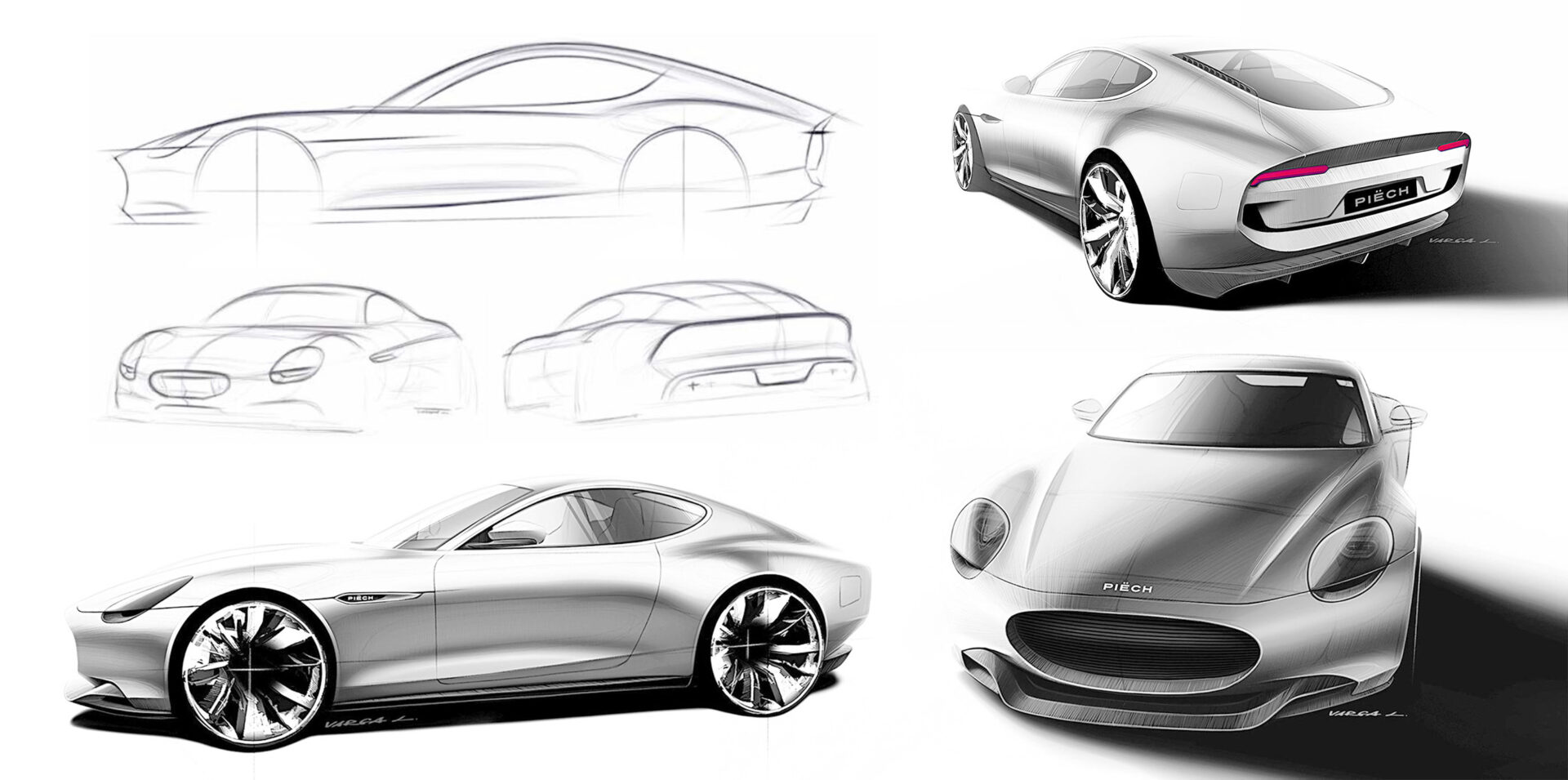
It got me thinking, “Why is this missing from modern car designs?“. With all the technology and knowledge available today, shouldn’t it be possible to infuse that same feeling into contemporary products? My friend shared this sentiment, and that’s when the idea took root. Initially, we aimed to create five cars for ourselves, just as a personal project. However, we soon realized the challenges involved. So we thought, “If we can produce 200 cars, maybe we can recoup some of the costs.” Eventually, it escalated to 1,000 cars, and then even 5,000 cars, to make financial sense.
But let me tell you, designing cars is not as easy as it seems. I had never done it before, except in 3D models, which make everything look good on the screen. So, I had to go back to basics. I immersed myself in learning the traditional methods of clay modeling. Nowadays, it’s easier with the abundance of tutorials available on platforms like YouTube. I educated myself and started experimenting. In a few months, I progressed from scale models to full-scale prototypes. I rented a studio and worked alongside professional clay modelers, feeling the tension and shaping the forms.
The outcome of this journey can be seen all over the internet and in my showroom. I understand when people say, “I see a hint of Porsche here, or Aston Martin there, or maybe a touch of Jaguar.” In reality, for car enthusiasts, it’s not about comparing specific features like arms and legs. When designing a classic GT, for example, certain proportions are necessary. That’s what defines a GT. It’s all about capturing that essence and shape.”

What role should designers play in large corporations, particularly at the board level, as you launched a design studio that aims to provide design guidance to such companies?
Rea Stark:
“I believe the question of the importance of design is a crucial one for companies, and it often carries a hefty price tag. It’s not that these companies are unintelligent, but rather they tend to have a different, sometimes incorrect, understanding of what design truly encompasses. Many view design as merely making something visually appealing, and that’s it. However, if you examine the top 10 biggest companies globally, you’ll likely find that design plays a significant role in their DNA. It is a vital element.
Over the past two decades, I’ve been trying to understand why certain companies, like Sony, are incredibly successful while others, like Panasonic, are not. I spent years in Japan studying this. When I was younger, I thought some were doing things right and others were not doing so well. But the truth is, there is a real answer. It lies in design thinking and the design DNA. It is a key factor in creating value.
Typically, when two products are similar and priced similarly, companies without any designers or design thinking involved tend to resort to increasing marketing budgets or reducing production costs to gain a competitive edge. However, very few would think to enhance the design quality of the product itself to attract consumers. This is because companies often operate with a different mindset. I encounter this issue frequently, particularly in Zurich. Here, we offer design consultancy services to companies and I also invest in projects myself.
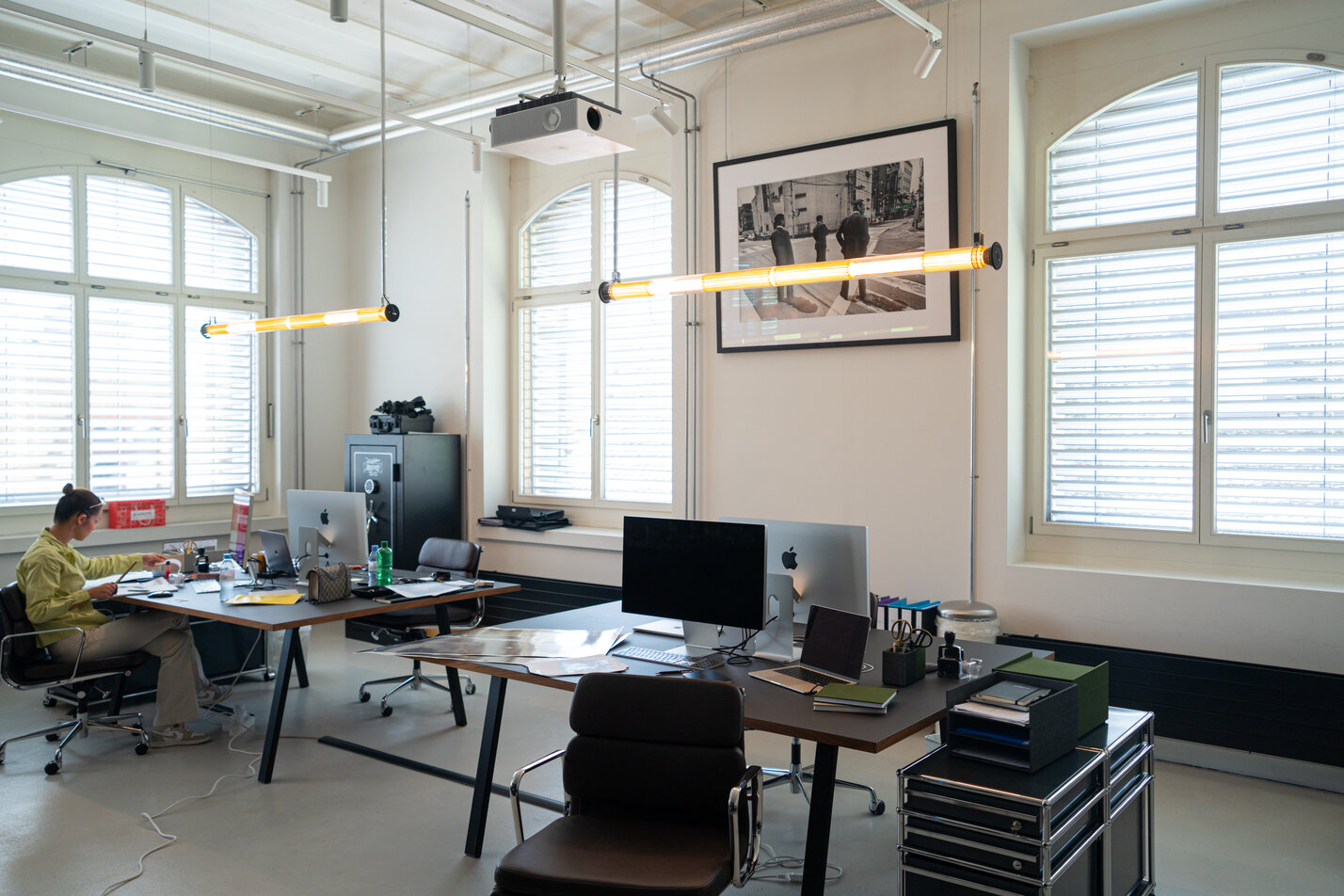
Our unique approach sets us apart. We not only provide design consultancy but also co-invest in projects. When I see a product with potential, solid financial backing, and a great idea, I envision what it could become if a genuine design process is integrated from start to finish. This is our sweet spot. The sky’s the limit for a product like that. It doesn’t matter what industry you’re in; if you approach it the right way, success is highly probable.
Even Nespresso, for instance, faced skepticism and doubts about market viability and health concerns. But a beautiful product with innovative elements can still succeed. I believe companies should recognize the criticality of design and implement it from top to bottom. It cannot be a half-hearted effort or an external add-on. Design should be an integral part of the company, involved from the beginning to the end. While this may require careful consideration for business-minded individuals, it is essential. Designers embrace it fully.”
Which criteria or key performance indicators (KPIs) can be utilized to demonstrate the impact of design on business outcomes?
Rea Stark:
“This is an excellent question that highlights a common challenge. Typically, it’s easier to measure the impact of marketing activities or sales efforts through budgeting and sales figures. The marketing department or even the engineers often take credit for successes, citing their decisions as the driving force. However, when it comes to products, design is actually at the core of everything, influencing every aspect. Just take Apple, for example.
Measuring the impact of design requires tangible and quantifiable numbers that financial professionals can comprehend. If there were a clear formula, such as investing X amount of money and generating X times 3 million in return, it would be a no-brainer. Unfortunately, no such formula exists. I would love to see research that breaks down the intricacies of measuring design impact in detail.

With the advancements in technology, one approach could be to closely monitor the market’s reactions. Analyzing social media platforms and other sources for big data can provide insights into how people appreciate design. It’s crucial to focus on user-centric design and gather feedback that indicates ease of use, beauty, and emotional connection. This feedback can help translate the value of design to financial professionals, demonstrating how it influences customer satisfaction and loyalty.
Ultimately, the true measure lies in creating fans rather than just customers or buyers. Fans are honest, forgiving, and passionate. They become loyal advocates, and that is the ultimate goal for all of us—to create a cult following, akin to a religious fervor, around a product or brand.”
In general, how do you think design can be promoted as a tool for innovation rather than just a surface-level intervention? Who should be responsible for valorizing the design community?
Rea Stark:
“First and foremost, it is essential to communicate that design encompasses much more than what is commonly perceived. As a designer, your perspective and thought process become reprogrammed over the years. You begin to observe everything from a design standpoint, questioning the reasoning behind choices and seeking to understand how and why things are made the way they are.
In contrast, financial professionals may visit a restaurant and automatically calculate the number of tables and plates to assess potential revenue. Designers, on the other hand, notice every detail, even when simply sipping an espresso from a cup. They naturally analyze and compare different cups, seeking to understand why one is better than another.

This mindset is a philosophy that sets designers apart. While some designers may approach their work as a specialized job, true passion drives good designers. Education certainly plays a role, but passion is the primary motivator. Even without formal education, if someone possesses enough passion for design, they can excel.
The first step is to redefine the term “design” in a way that makes it understandable to those outside the industry. Design is a much broader and more encompassing field than people often realize. It holds a higher significance than merely adding color or creating aesthetically pleasing products.
I understand why some may think, “I’ll hire a color designer to add some visual appeal, and then let the business side take over.” However, from my perspective, this thinking stems from a misconception about the true nature of design.”
Many young designers struggle to connect with companies and often face challenges in terms of financial sustainability. What advice would you give to younger individuals who are trying to establish their own design studio?
Rea Stark:
“As a designer, what truly distinguishes us from artists is our focus on placing the user at the center of our work. Unlike artists who may create purely for personal expression, our role is to create meaningful experiences for others. It’s crucial for designers to resist the temptation to act solely as artists. By doing so, we can better serve the needs of the wider world.
While an artist may create a sculpture for personal satisfaction, without considering its relevance to others, a designer cannot approach their work in the same manner. We can’t simply design a coffee cup based on our personal preference, thinking it’s the best design without considering the user’s needs and preferences.
This requires empathy and the ability to understand the perspectives of corporations at the board level. Design thinking encourages us to strive for this level of understanding, just as we expect others to understand our viewpoint.
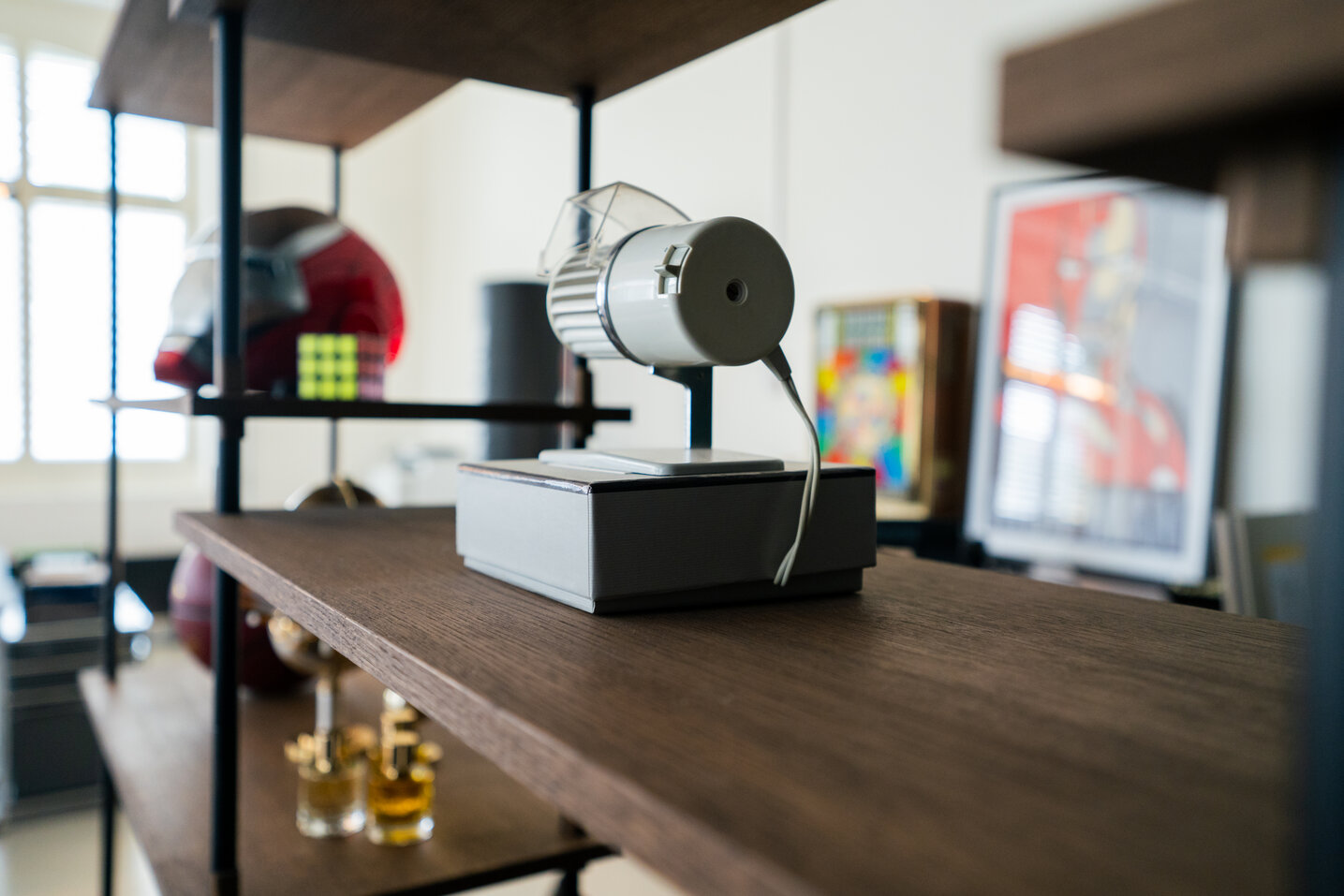
To be effective designers, we must also demonstrate interest, appreciation, and understanding in various fields such as finance, marketing, and engineering. While we don’t need to become experts in those areas, it is important to have a genuine curiosity and willingness to learn. This fosters collaboration and enables us to work well within a multidisciplinary team.
Ultimately, our responsibility as designers is to keep the user at the center of our design process. It’s now incumbent upon us to encourage board-level decision-makers to adopt the same approach and consider the user’s perspective. This involves reflecting on how we can be understood by others and finding ways to communicate our ideas effectively.
Some young designers may be driven by a desire to be different and create something entirely new. However, it is more important for us to design what is right and what makes sense. Rather than solely focusing on novelty, our primary goal should be to create designs that are relevant, meaningful, and cater to the needs of users.”







